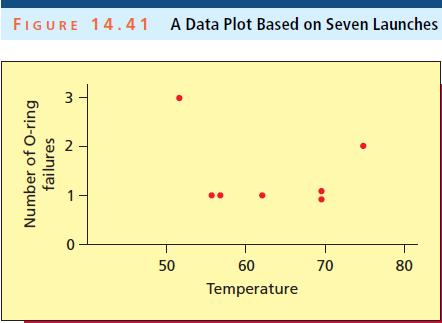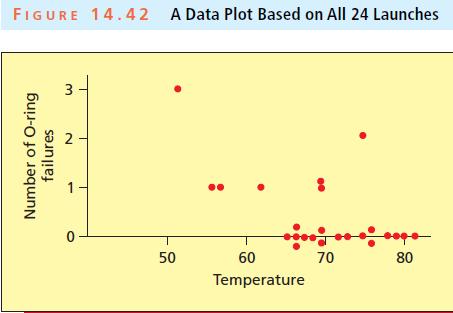On January 28, 1986, the space shuttle Challenger exploded soon after takeoff, killing all eight astronauts aboard.
Question:
On January 28, 1986, the space shuttle Challenger exploded soon after takeoff, killing all eight astronauts aboard. The temperature at the Kennedy Space Center at liftoff was 31°F. Before the launch, several scientists argued that the launch should be delayed because the shuttle’s O-rings might harden in the cold and leak. Other scientists used the data plot in Figure 14.41 to argue that there was no relationship between temperature and O-ring failure. On the basis of this figure and other considerations, Challenger was launched to its disastrous, last flight. Scientists using the data plot in Figure 14.41 made a horrible mistake. They relied on a data plot that was created by using only the seven previous launches where there was at least one O-ring failure. A plot based on all 24 previous launches—17 of which had no O-ring failures—is
given in Figure 14.42.
a. Intuitively, do you think that Figure 14.42 indicates that there is a relationship between temperature and O-ring failure? Use simple linear regression to justify your answer.
b. Even though the figure using only seven launches is incomplete, what about it should have cautioned the scientists not to make the launch?
Data from Figure 14.41
Data from Figure 14.42
Step by Step Answer:

Business Statistics In Practice
ISBN: 9780077534844
7th Edition
Authors: Bruce Bowerman, Richard OConnell, Emilly Murphree





